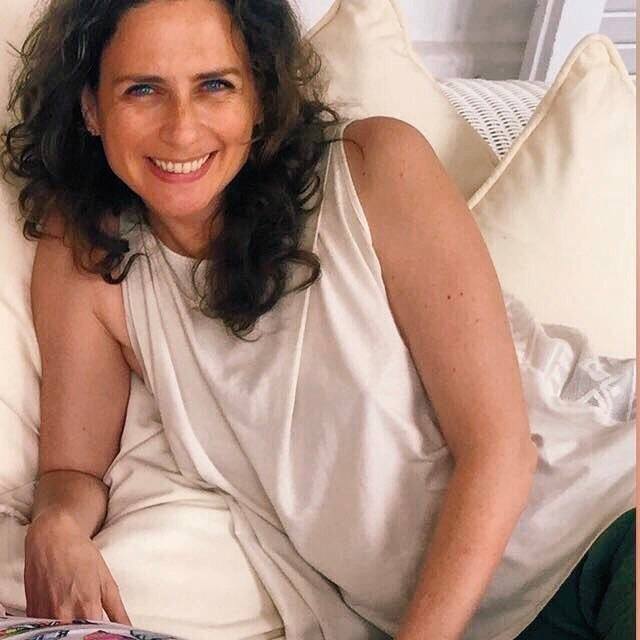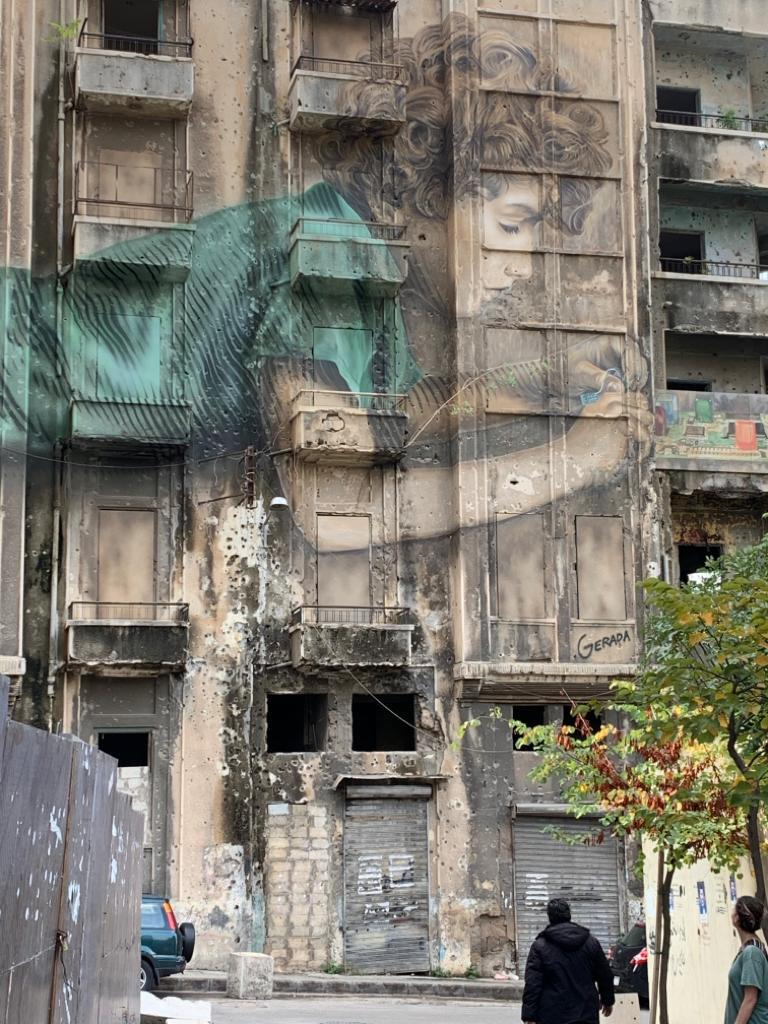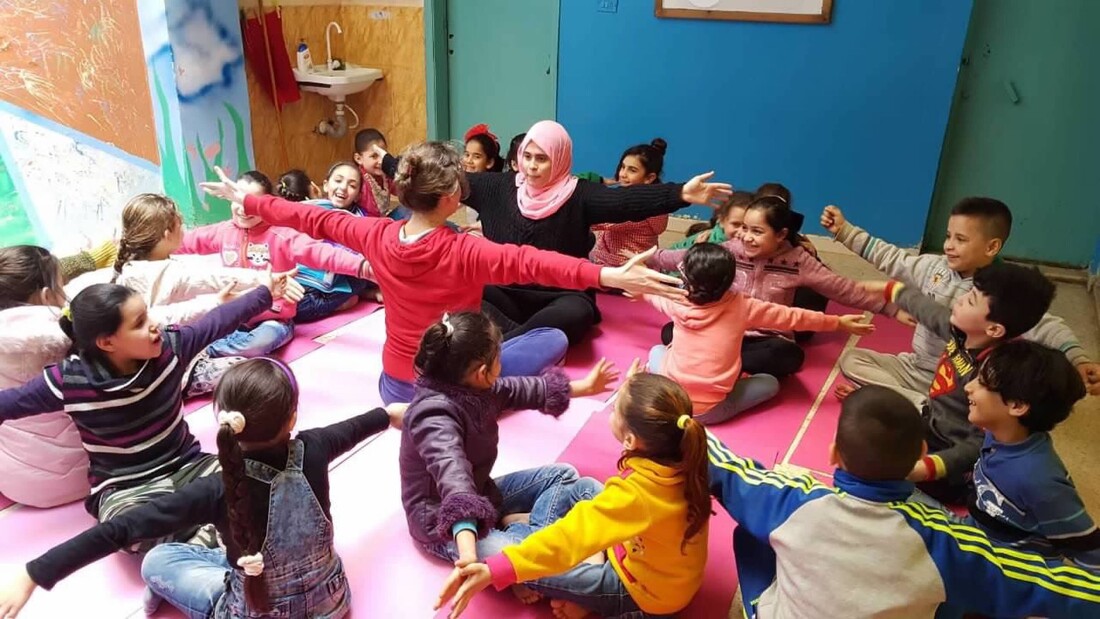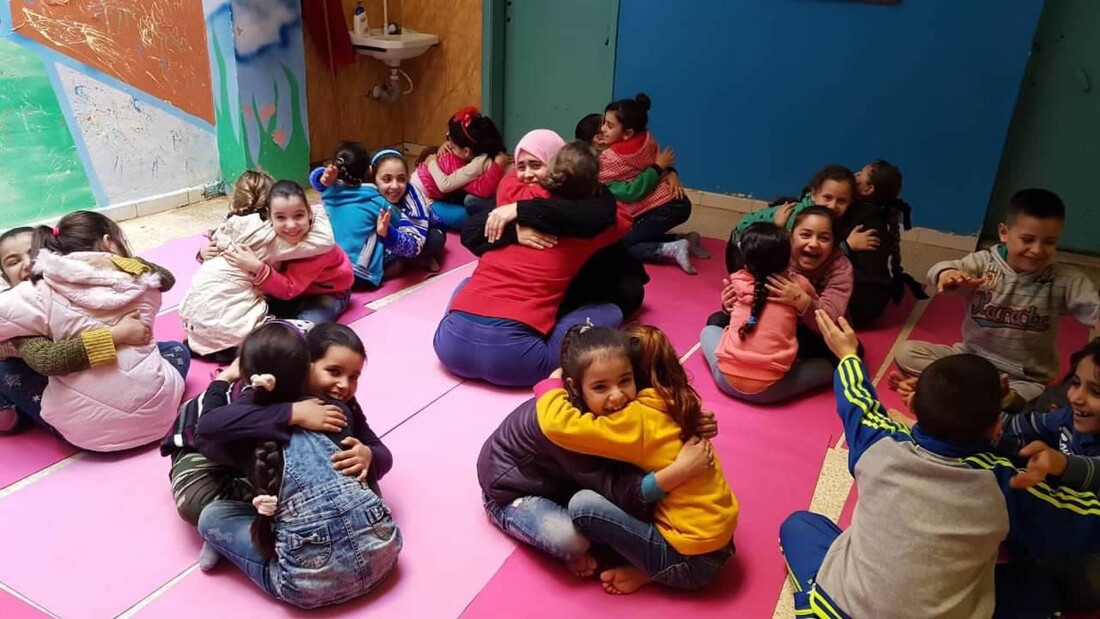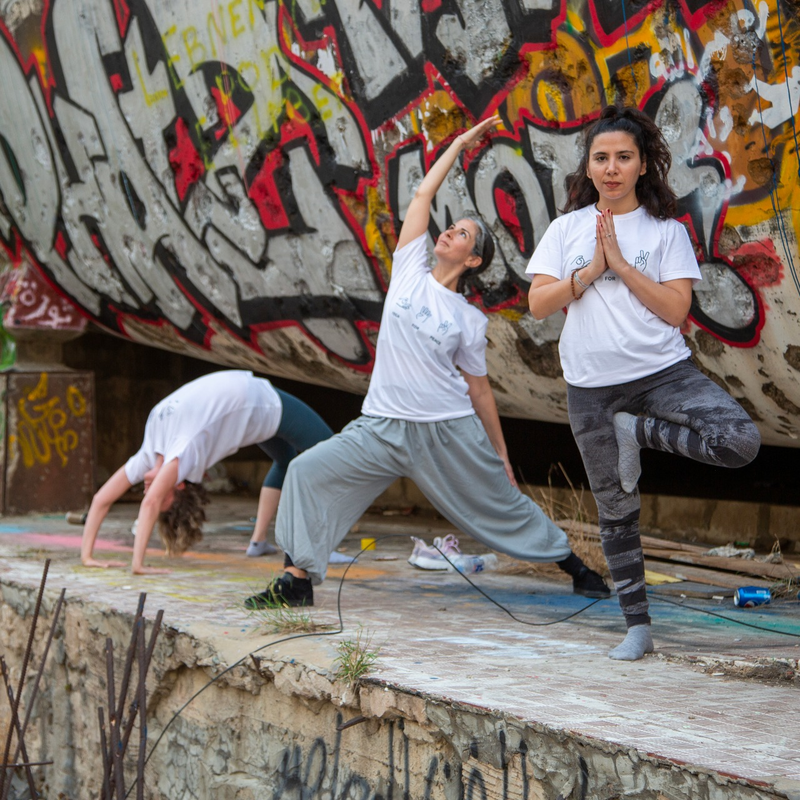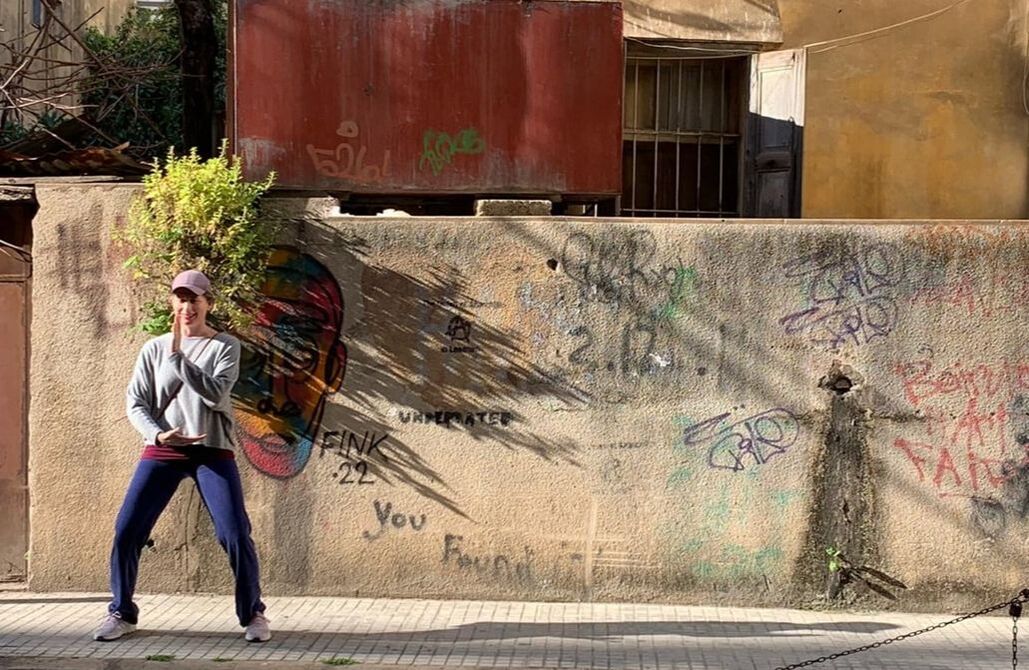Audios
In the Press
"From Beirut, Zena Takieddine teaches the art of healing through movement..."Click here for the original interview (in Spanish) by Christiane Waked for The Political Room, May 2020.
Yoga is not a competitive sport; it is a care and a service. It is not elitist; it is for everyone and especially for the most vulnerable and exhausted among us. Yoga is about transforming weakness and fear into inner strength and kindness. |
C.W: You have been a writer, cultural researcher and yoga teacher in Saudi Arabia, Syria and Lebanon. How did these environments transform you?
Z.T: Growing up in Saudi Arabia meant living with good service but isolated, with the expectation that everything should be done for you instead of doing it for yourself. There was no natural interaction with the city or a sense of belonging. On the other hand, there was good family bonding and luckily my family was a lot of fun.
We always went to Damascus during summers, so Syria for me was about visiting aunts, uncles and cousins. Jasmine trees at the entrance of my grandmother's apartment, apricot jam and white halloumi cheese for breakfast. When I was in Damascus, I realized that there were many nuances in Islam and that there was a more beautiful Sufi form. I also discovered that there were many religions besides Islam that were deeply rooted and revered. I learned that faithfulness and piety were a shared understanding and that people didn't really care what faith you had so long as you were a good neighbor. Damascus resembled Spain in the coexistence between cultures that it experienced before the Reconquest. In fact, many of Andalusia's cities remind me of Damascus.
Lebanon has another character, especially Ras Beirut. Much more hustle and bustle, street-side cafes, theaters, fashion, newspapers, social activism of all colors and a nightlife recognized on a global level. Beirut has a kind of charm that cannot be described, it makes me fall in love with it every day. I have had to strengthen my voice, to thicken my skin and be braver, because here everyone makes themselves heard and creativity and frustration are pouring from the cracks in the wall.
Z.T: Growing up in Saudi Arabia meant living with good service but isolated, with the expectation that everything should be done for you instead of doing it for yourself. There was no natural interaction with the city or a sense of belonging. On the other hand, there was good family bonding and luckily my family was a lot of fun.
We always went to Damascus during summers, so Syria for me was about visiting aunts, uncles and cousins. Jasmine trees at the entrance of my grandmother's apartment, apricot jam and white halloumi cheese for breakfast. When I was in Damascus, I realized that there were many nuances in Islam and that there was a more beautiful Sufi form. I also discovered that there were many religions besides Islam that were deeply rooted and revered. I learned that faithfulness and piety were a shared understanding and that people didn't really care what faith you had so long as you were a good neighbor. Damascus resembled Spain in the coexistence between cultures that it experienced before the Reconquest. In fact, many of Andalusia's cities remind me of Damascus.
Lebanon has another character, especially Ras Beirut. Much more hustle and bustle, street-side cafes, theaters, fashion, newspapers, social activism of all colors and a nightlife recognized on a global level. Beirut has a kind of charm that cannot be described, it makes me fall in love with it every day. I have had to strengthen my voice, to thicken my skin and be braver, because here everyone makes themselves heard and creativity and frustration are pouring from the cracks in the wall.
|
C.W: In your academic years, you went from studying history to studying art. You have a BA in History from the American University of Beirut, a Diploma in Arts Connoisseurship from the Sotheby’s Institute and an MA in Islamic Art and Archaeology from SOAS. This allowed you to lecture at various universities and to participate in many interesting intercultural projects. Could you tell us about them?
Z.T: I studied history because I knew that the knowledge I grew up with had a very limited scope and did not help me understand why we were in the place we were. I was surprised to learn that our contribution to global civilization had been far greater than the mainstream US media and news channels led us to believe where, in some way, Arabs and Muslims were always "the bad guys." Still, I discovered that written history tended to focus on wars and battles. I was hungry for something that showed the beauty of life. That is what led me to art. |
Written history tended to focus on wars and battles. I was hungry for something that showed the beauty of life. That is what led me to art.
One of the favorite initiatives I participated in is Museum With No Frontiers, or MWNF, a virtual museum that brings together the Islamic and European heritage of the Mediterranean. I loved working on this project because it attempted to show a continuity of history while allowing it to be represented from different perspectives, side by side. It also insisted on presenting the information in Arabic, English and Spanish (for starters; since then, it has expanded to include many more languages) and on entrusting the academics who belonged to the land, instead of "foreign experts", as primary authors. Art history specialists from all over Europe, North Africa and the Levant participated in the creation of this multicultural platform. It has become an educational resource worldwide. I imagine now even more so with the travel lockdown produced by COVID-19.
C.W: You have also been a yoga teacher since 2009. How does that fit with arts and culture teaching?
Z.T: You have to be sensitive to appreciate what art is about. Yoga opens your senses. It seems to me that people have trouble relating to art because they think of it as a separate object and not as a trace of human existence.
Z.T: You have to be sensitive to appreciate what art is about. Yoga opens your senses. It seems to me that people have trouble relating to art because they think of it as a separate object and not as a trace of human existence.
C.W: You have a tendency to teach yoga in some unusual places, refugee camps and conflict zones, rather than boutique studios and spa retreats.
Z.T: I always believed that yoga was for everybody. I started teaching in 2009 in my hometown, Damascus. Not a lot of people knew about yoga then. I taught in small groups, mostly women. It has since become a trendy thing, but I am not concerned with teaching those among us who are already healthy and fitness-oriented. I want to reach the ones who go unnoticed in their daily struggles; women who carry the heavy burdens of life, of taking care of their families; the ones who never knew any form of self-care. Those are the ones I wanted to reach.
Z.T: I always believed that yoga was for everybody. I started teaching in 2009 in my hometown, Damascus. Not a lot of people knew about yoga then. I taught in small groups, mostly women. It has since become a trendy thing, but I am not concerned with teaching those among us who are already healthy and fitness-oriented. I want to reach the ones who go unnoticed in their daily struggles; women who carry the heavy burdens of life, of taking care of their families; the ones who never knew any form of self-care. Those are the ones I wanted to reach.
When I arrived in Lebanon, I was fortunate to meet like-minded people who set up projects to teach yoga in remote and disadvantaged communities. Together we were able to cater to a broader population, teaching in English and Arabic.
Yoga is not a competitive sport; it is a care and a service. It is not elitist; it is for everyone and especially for the most vulnerable and exhausted among us. Yoga is about transforming weakness and fear into inner strength and kindness. I remember one time, a stocky and silent woman who was my mother's age stayed a little longer after the class and implied that she needed to talk. There in the locker room, she informed me that she came from Iraq and that, of her two sons, one had been killed in Baghdad and the other who had been kidnapped and she did not know if he were dead or alive. Her eyes were seeking and she spoke hushed but urgent. This moment happened in my early days of teaching and I was not mentally prepared to receive any of this information, but she clung to me with her gaze that was crying out for someone to listen. I called on my yoga training to stay grounded and present, to listen. She told me how she had grown numb, how she had forgotten how to breathe, how she had been holding her breath for all those years. And as she felt compelled to speak, I could see her heavy shoulders release and her compacted body visibly soften into a confused mix of gratitude and pain. She could feel again, breathe again. Yoga can do that. And no complicated poses are required. Just a constant return of consciousness to breath.
|
C.W: Today, among other things, you are also a practitioner of Somatic Experiencing and you did the training in Spain. How was it?
Z.T: The approach was developed by Dr. Peter A. Levine, who explains that trauma is not about the events that happen to us, but about the traces of energy and impulses from our body's defensive responses: fight, flight and freeze. Releasing trauma is then a matter of allowing these impulses to complete themselves and to be expressed, rather than remain in the body. It makes sense, right? But because traumatic events are often frightening, painful, and confusing, if not absolutely horrifying, there is a part of us that avoids going there or simply doesn't know where to start. All these layers are taken into account with great delicacy and care in the Somatic Experiencing method. It really is a highly refined approach that honours each individual's wisdom. Many personal stories come up during these types of training and I feel very fortunate to have had the opportunity to study Somatic Experiencing in Spain, where social engagement and warmth are at the heart of culture. It is a 3-year training that takes place in the south of Andalusia in a quiet coastal city called Huelva. The friendships I made there are friendships for lifetime and we still have our monthly Skype calls to stay in touch. |
C.W: I have seen that you also started a QiGong practice out on the street in your Hamra neighborhood during the lockdown. What inspired you to do that?
Z.T: Under normal circumstances, Beirut would be too noisy for such a practice to take place, but with the current lockdown, the streets are empty like never before! Instead of letting restlessness and anxiety prevail, it was an opportunity to rejuvenate the space with good vibes. I asked myself, what could be done that could bring a sense of community and connection in a way that supports our wellness, and at the same time respect social distancing and hygiene? QiGong seemed like the perfect answer. The beauty of QiGong is that it does not involve complicated steps or props. It is mainly upper body movements, the legs are grounded. The sequence I chose to teach was just 15 minutes long and all about stability. It didn't take too much time. The trick was to make it happen on daily basis; regularity. QiGong creates an experience of deep stability and balance and that’s exactly we needed as our region totters on collapse. The movements are slow and smooth, accessible for anyone to follow, even elder neighbors from their balconies. It was a collective initiative that grew out of the neighborhood’s need to connect with something calming. |
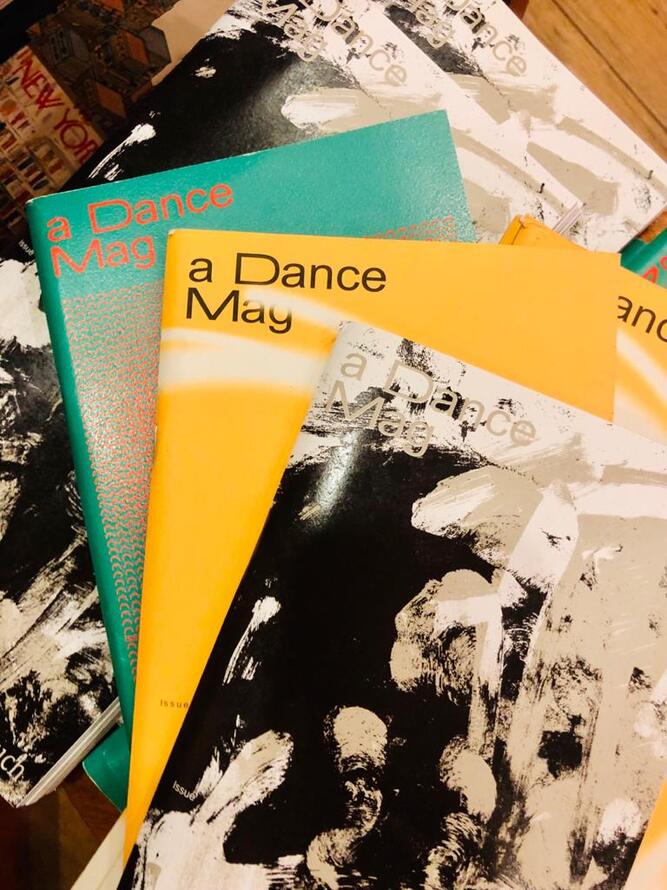
C.W: You also recently graduated from NeuroAffective Touch foundations. How did you manage to do a touch training in the middle of the COVID 19 pandemic when making physical contact is exactly what we should not do?
Z.T: It was complicated! An adaptation process.
I do not believe that we are destined to continue life without human contact. The upside is that I discovered it is possible to offer therapeutic touch that is not about physical contact, but empathetic and energetic presence.
Many things can happen in trauma therapy by drawing attention to tensions in the body and offering them support in mindful ways. The most important thing, with or without physical contact, is to feel safe.
C.W: You are also an editor of the international dance magazine "A Dance Mag", where dance is explored as a human phenomenon in its various physical and emotional forms. Tell us more about it.
Z.T: It was complicated! An adaptation process.
I do not believe that we are destined to continue life without human contact. The upside is that I discovered it is possible to offer therapeutic touch that is not about physical contact, but empathetic and energetic presence.
Many things can happen in trauma therapy by drawing attention to tensions in the body and offering them support in mindful ways. The most important thing, with or without physical contact, is to feel safe.
C.W: You are also an editor of the international dance magazine "A Dance Mag", where dance is explored as a human phenomenon in its various physical and emotional forms. Tell us more about it.
Z.T: A Dance Mag is about telling stories from the experience of the body. So, it is not about dance as performance. We are born to dance. We feel alive when we dance. It is a universal phenomenon that is fundamentally about movement. My friend and colleague Jana al-Obeidyine is the dynamo behind this unique publication, she is the founder. Together with our editorial team, we have managed to collect and publish stories from all around the world. We look for stories and interviews and poems that show the body alive, empowered and creative beyond limits.
There is a human truth in every gesture, but often, the body is supressed or ignored. Instead, we are bombarded with "talking heads" on every media platform, so much noise! We wanted a magazine that offers a place where the body can be recognized and given a voice.
There is a human truth in every gesture, but often, the body is supressed or ignored. Instead, we are bombarded with "talking heads" on every media platform, so much noise! We wanted a magazine that offers a place where the body can be recognized and given a voice.
C.W: Is there a bridge between your experience in history, arts and culture, on the one hand, and your practice in therapeutic bodywork and yoga on the other?
Z.T: The two seem like separate worlds! I like to say that history and culture are on a horizontal axis; Yoga and Qigong are on a vertical axis, and the relationship between the two is art.
C.W: Do you have any vision of what the world could be like once we get out of these uncertain times?
Z.T: I hope that people appreciate what is most valuable in life and realize that it is possible to live in a much simpler, kinder and more creative way than we thought we could.
Z.T: The two seem like separate worlds! I like to say that history and culture are on a horizontal axis; Yoga and Qigong are on a vertical axis, and the relationship between the two is art.
C.W: Do you have any vision of what the world could be like once we get out of these uncertain times?
Z.T: I hope that people appreciate what is most valuable in life and realize that it is possible to live in a much simpler, kinder and more creative way than we thought we could.
